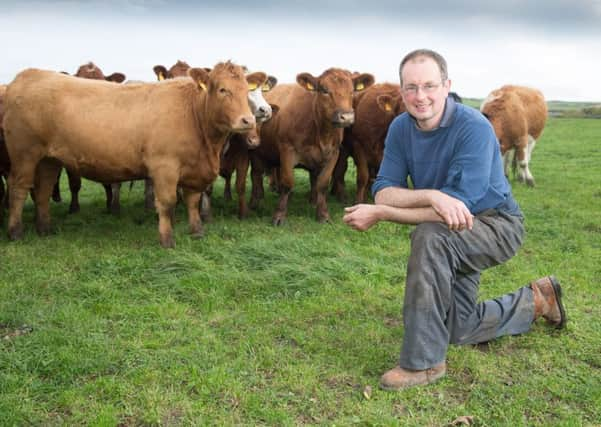Whitby farmer switches beef breed to build resilience to change


For some time the message from industry groups representing each agricultural sector has been for farmers to fully realise their production costs and to adopt ways of carrying out their work more efficiently.
In that vein, dozens of farmers are expected to attend a free event on Guy Prudom’s farm near Whitby on Friday, July 13 to gain an insight into how he has improved grassland management on his rented acreage as part of the Agriculture and Horticulture Development Board’s (AHDB) Strategic Farmer project.
Advertisement
Hide AdAdvertisement
Hide AdMr Prudom, 48, runs almost 200 suckler cows on his farm which he supplies to meat processors Dovecote Park at Pontefract to go on supermarket shelves.
He also managed 350 acres of arable land to produce homegrown feed rations for his herd.
His is a spring calving herd consisting predominantly of Simmental cattle but he has started to introduce Stabilisers, an increasingly popular breed for its more manageable size and ease of calving.
It is a move which is intended to save him money in the long run as their smaller size - typically growing to around 650kg - means they are a better match for the feed that can derived from the farm’s crops and grass.
Advertisement
Hide AdAdvertisement
Hide AdHe said there was a nervousness about farming’s future profitability as he fears British agriculture will be the “sacrificial goat” in trade deals with other countries because Britain can afford the cost of importing more food.
“We don’t know what’s going to happen. As an industry, we’re all a bit nervous,” Mr Prudom said as he went on to explain how he was approaching the uncertainty.
“I’m trying to get a grip on costs, that’s the most important thing I can do. It’s vital because we always seem to be chasing our tails. A lot of farmers are running round two or three jobs and by the time they get home and spend time with their family they have nothing left.
“I’ve been benchmarking the herd’s performance for years through AHDB but I have never tried to drill down as far as what we are trying to get down to now.”